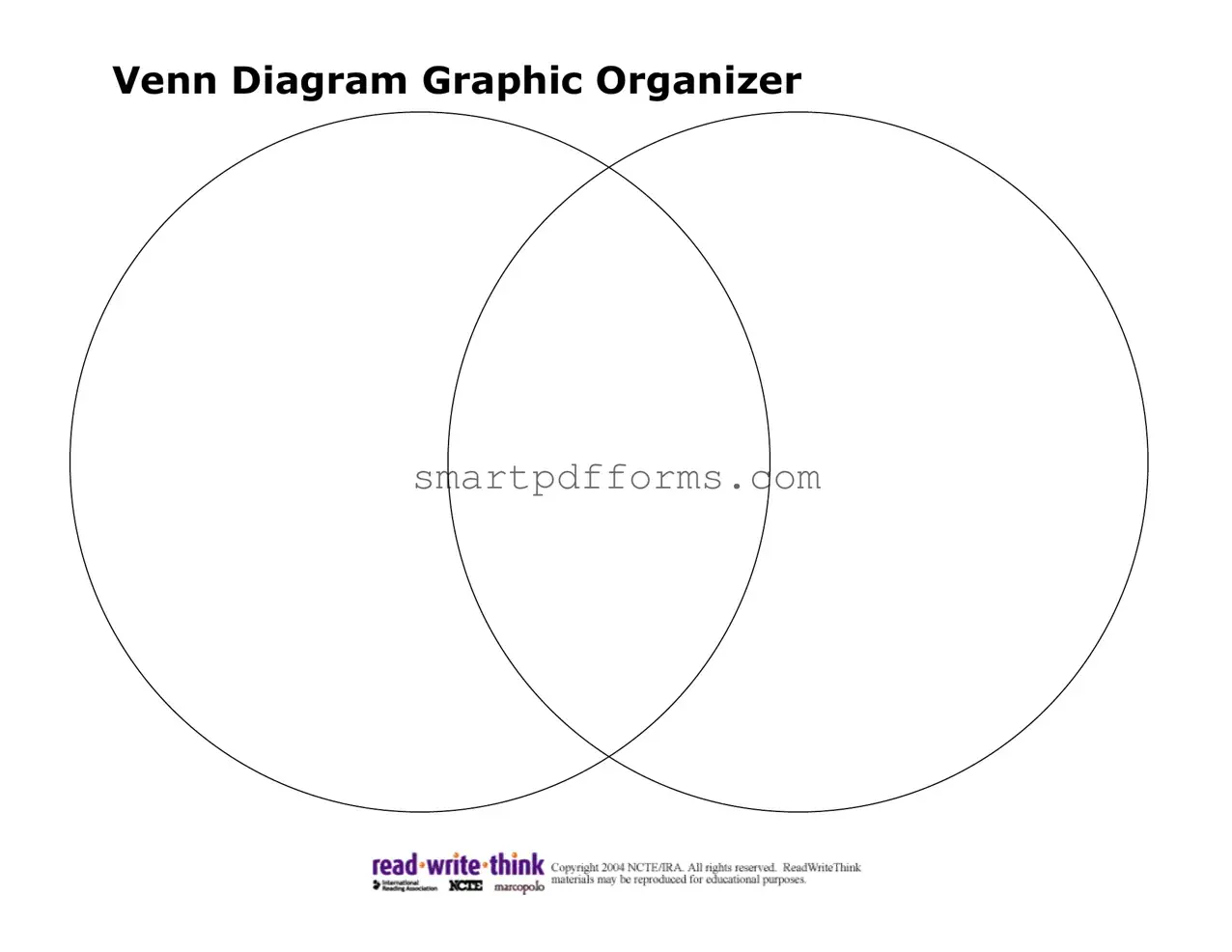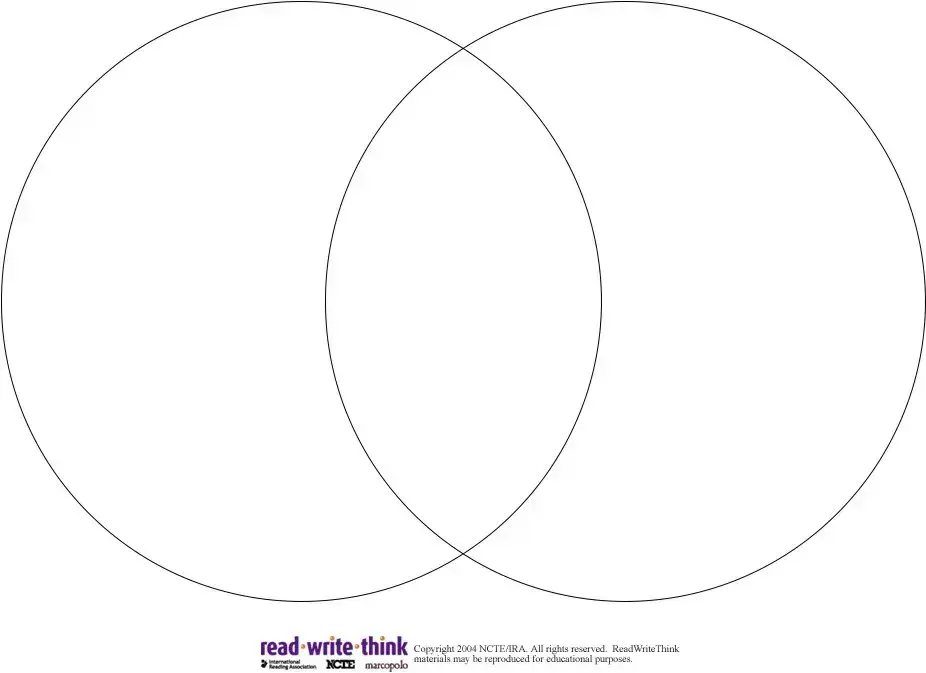Blank Venn Diagram Graphic Organizer PDF Template
The Venn Diagram Graphic Organizer is a visual tool that helps to compare and contrast two or more items, ideas, or concepts by arranging them in overlapping circles. This form can highlight both similarities and differences effectively, making it an invaluable aid in various decision-making processes. If you're ready to organize your thoughts clearly and see connections you might have missed, click the button below to fill out the form.
Make This Document Now

